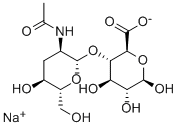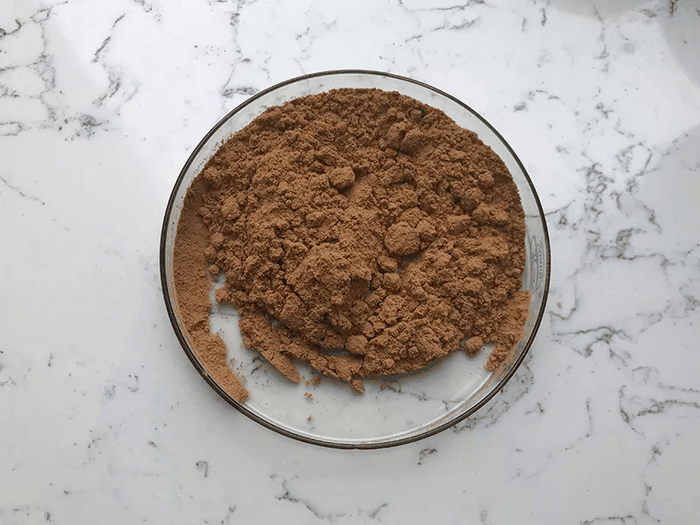Kojic acid
Synonym(s):2-Hydroxymethyl-5-hydroxy-γ-pyrone;5-Hydroxy-2-hydroxymethyl-4H-4-pyranone;5-Hydroxy-2-hydroxymethyl-4H-pyran-4-one;Kojic acid
- CAS NO.:501-30-4
- Empirical Formula: C6H6O4
- Molecular Weight: 142.11
- MDL number: MFCD00006580
- EINECS: 207-922-4
- SAFETY DATA SHEET (SDS)
- Update Date: 2024-12-18 14:08:57

What is Kojic acid?
Chemical properties
tan powder
The Uses of Kojic acid
kojic acid is a skin-lightening agent that acts through anti-oxidant activity. Kojic acid is a tyrosinase inhibitor, although it is not as effective as licorice extract. When combined with allantoin and other proper ingredients in sunscreen preparations, the mixture can inhibit uV-caused erythema and accelerate wound healing. It is also found to be skin sensitizing and can be irritating.
The Uses of Kojic acid
A naturally occurring chelation agent.
The Uses of Kojic acid
hydroxystearate nonionic solubilizer
The Uses of Kojic acid
Converted to maltol and ethyl maltol, flavor-enhancing additives. Food additive to inhibit tyrosinase.
What are the applications of Application
Kojic acid is a tyrosine kinase inhibitor that acts as a chelation agent which inhibits melanin production.
Definition
ChEBI: A pyranone that is 4H-pyran substituted by a hydroxy group at position 5, a hydroxymethyl group at position 2 and an oxo group at position 4. It has been isolated from the fungus Aspergillus oryzae.
General Description
Kojic acid, a tyrosinase inhibitor, is produced by several fungi species, including Aspergillus oryzae. It exhibits skin-lightening property, due to its ability to chelate the copper-containing enzyme tyrosinase in the formation of melanin. Kojic acid is also commonly used as a whitening agent in regular cosmetics, bleaching cosmetics, etc. It is found to be a therapeutic agent and helps in preventing pigmentation.
Biochem/physiol Actions
Kojic acid is derived from some fungal species such as, Aspergillus, Acetobacter and Penicillium.. It halts melanin synthesis by inhibiting tyrosinase enzyme. It is used in the preparation of skin whitening cosmetics. However, kojic acid usage is minimal in cosmetics, as it induces skin irritation by its unstability and cytotoxic nature during long storage. It is an antioxidant and elicits radioprotective effects on chelating with manganese and zinc.
Purification Methods
Crystallise the acid from MeOH (charcoal) by adding Et2O. It sublimes at 150-200o/0.1torr. [Beilstein 18 II 57, 18 III/IV 1145, 18/2 V 516.]
Properties of Kojic acid
| Melting point: | 152-155 °C (lit.) |
| Boiling point: | 179.65°C (rough estimate) |
| Density | 1.1712 (rough estimate) |
| refractive index | 1.4434 (estimate) |
| storage temp. | Store below +30°C. |
| solubility | DMSO (Slightly), Methanol (Slightly, Sonicated) |
| form | Crystalline Powder |
| pka | 7.9(at 25℃) |
| color | White to beige-brown |
| Water Solubility | SOLUBLE |
| λmax | 269nm(CHCl3)(lit.) |
| Merck | 14,5317 |
| BRN | 120895 |
| Stability: | Stable. Combustible. Incompatible with strong oxidizing agents. |
| CAS DataBase Reference | 501-30-4(CAS DataBase Reference) |
| IARC | 3 (Vol. 79) 2001 |
| NIST Chemistry Reference | 5-Hydroxy-2-(hydroxymethyl)-4h-pyran-4-one(501-30-4) |
| EPA Substance Registry System | Kojic acid (501-30-4) |
Safety information for Kojic acid
| Signal word | Warning |
| Pictogram(s) |
 Health Hazard GHS08 |
| GHS Hazard Statements |
H351:Carcinogenicity |
| Precautionary Statement Codes |
P201:Obtain special instructions before use. P202:Do not handle until all safety precautions have been read and understood. P280:Wear protective gloves/protective clothing/eye protection/face protection. P308+P313:IF exposed or concerned: Get medical advice/attention. P405:Store locked up. |
Computed Descriptors for Kojic acid
Kojic acid manufacturer
SS Reagents and Chemicals
New Products
(S)-3-Aminobutanenitrile hydrochloride 4-Methylphenylacetic acid N-Boc-D-alaninol N-BOC-D/L-ALANINOL Tert-butyl bis(2-chloroethyl)carbamate 3-Morpholino-1-(4-nitrophenyl)-5,6-dihydropyridin- 2(1H)-one Furan-2,5-Dicarboxylic Acid Tropic acid 1-Bromo-3,5-Di-Tert-Butylbenzene S-2-CHLORO PROPIONIC ACID ETHYL ISOCYANOACETATE 2-Bromo-1,3-Bis(Dimethylamino)Trimethinium Hexafluorophosphate 4-IODO BENZOIC ACID 3-NITRO-2-METHYL ANILINE 1-(2,4-DICHLOROPHENYL) ETHANAMINE (2-Hydroxyphenyl)acetonitrile 4-Bromopyrazole 2-(Cyanocyclohexyl)acetic acid 4-methoxy-3,5-dinitropyridine 1-(4-(aminomethyl)benzyl)urea hydrochloride 2-aminopropyl benzoate hydrochloride diethyl 2-(2-((tertbutoxycarbonyl)amino) ethyl)malonate tert-butyl 4- (ureidomethyl)benzylcarbamate Ethyl-2-chloro((4-methoxyphenyl)hydrazono)acetateRelated products of tetrahydrofuran








You may like
-
 501-30-4 98%View Details
501-30-4 98%View Details
501-30-4 -
 Kojic acid CAS 501-30-4View Details
Kojic acid CAS 501-30-4View Details
501-30-4 -
 Kojic acid CAS 501-30-4View Details
Kojic acid CAS 501-30-4View Details
501-30-4 -
 Kojic Acid CAS 501-30-4View Details
Kojic Acid CAS 501-30-4View Details
501-30-4 -
 KOJIC ACID 99% CAS 501-30-4View Details
KOJIC ACID 99% CAS 501-30-4View Details
501-30-4 -
 Kojic acid CAS 501-30-4View Details
Kojic acid CAS 501-30-4View Details
501-30-4 -
 Kojic acid CAS 501-30-4View Details
Kojic acid CAS 501-30-4View Details
501-30-4 -
 5-Hydroxy-2-hydroxymethyl-4H-pyran-4-one CAS 501-30-4View Details
5-Hydroxy-2-hydroxymethyl-4H-pyran-4-one CAS 501-30-4View Details
501-30-4